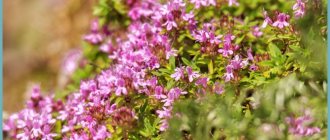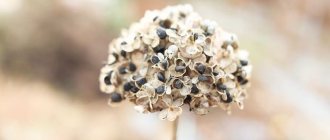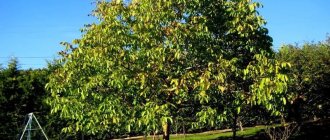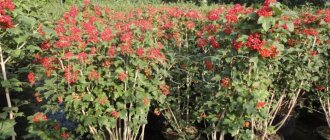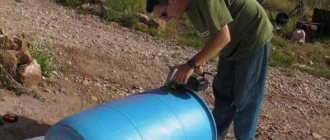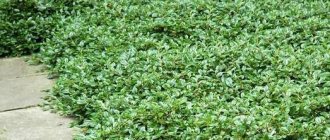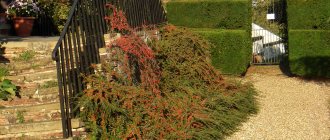The desire to fence off your territory in order to hide from indiscreet glances, uninvited guests, stray animals or to block the wind is inherent in most land owners. One of the most successful options is a hedge of green spaces. It not only protects from unwanted guests, extraneous noise and road dust, but also decorates the area. Due to its properties, cotoneaster is used as a hedge and has been used for a long time. This shrub forms a dense and beautiful screen of medium height, providing good protection and not requiring much care.
Description of cotoneaster
Wild cotoneaster brilliant grows in the northern provinces of China and southern Siberia. It loves rocky slopes and pebble deposits along river banks. The plant is very unpretentious, so dogwood bushes are convenient to use for hedges.
Cotoneaster bushes can create a hedge three meters high. The crown of a free-standing bush can exceed its height by one and a half times, so the hedge will have to be trimmed regularly.
The shiny, dark green has a yellowish underside and changes color to reddish brown in the fall. In late spring or early summer, the brilliant cotoneaster is covered with pink inflorescences. They envelop the shoots so thickly that the foliage is almost invisible because of them. In mid-autumn, shiny fruits with a diameter of 7-9 cm ripen.
Varieties of brilliant cotoneaster suitable for hedges:
Common cotoneaster. The most frost-resistant and undemanding variety. Suitable for central Russia.
Hybrid Coral handsome. A low-growing shrub up to half a meter in height and two to three times as wide. It is distinguished by white inflorescences and coral-colored berries.
Black cotoneaster. Grows up to 2.5 m, has matte foliage. Withstands low temperatures well.
Evergreen cotoneaster. Grows up to 2 m in height. The foliage is silver-green, the berries are orange, with crimson tints.
There are several low-growing varieties that should not be used to create a hedge: creeping cotoneaster, horizontal, creeping, appressed, dwarf. These types are more suitable for decorative borders or lawn design.
Important! Dogwood differs from brilliant cotoneaster. The berries of the first type are used for food, while the second type is inedible.
Types and varieties of cotoneaster
We offer you an introduction to the most popular types of cotoneasters grown in cultivation.
Cotoneaster lucidus
native to Eastern Siberia, where it grows singly or in groups. It is an upright, densely leafy deciduous shrub. The height of the brilliant cotoneaster reaches two meters. Its young shoots are densely pubescent, elliptical in shape, shiny dark green leaves up to 5 cm long, pointed towards the top. Pink flowers in loose corymbose inflorescences open in May or June and bloom for 30 days. The shiny spherical black fruits are decorative and remain on the bushes until winter. Fruiting occurs at four years.
Most often used to create hedges, group plantings on edges and lawns. In culture since the beginning of the 19th century.
Cotoneaster melanocarpus
It is also quite winter-hardy for our latitudes. This cotoneaster is edible, unlike many other types of plants. In the wild, it can be found in the Caucasus, Central Asia, Northern China and Central Europe. The shrub reaches a height of 2 meters, its shoots are red-brown in color, and the fruits are black. The leaves are ovate, up to 4.5 cm long, the upper side of the plate is dark green, the lower side is white-tomentose, the apex is obtuse or notched. Annual fruiting begins at the age of five. Pink flowers in loose clusters of 5-12 pieces bloom for about 25 days.
The species is frost-resistant and does not require moisture; in addition, plants of this species are excellent honey plants; canes, pipes and other crafts are made from their wood. The species has a decorative laxiflora form with loose drooping inflorescences and larger fruits than the original species. Aronia cotoneaster has been in cultivation since 1829.
Cotoneaster integerrimus
Deciduous shrub, found in nature from the Baltic states to the North Caucasus on mountain slopes, in limestone and sandstone. In cultivation, this deciduous shrub is still a rare occurrence. The cotoneaster bush grows up to two meters in height, its crown is rounded, young branched shoots are covered with woolly pubescence, but with age they become bare. Its leaves are broadly ovate, up to 5 cm long, dark green above, smooth and shiny, gray-felt underneath. Pinkish-white flowers are collected in clusters of 2-4 pieces. The fruits are bright red and up to one centimeter in diameter.
The winter hardiness of this species is high; in addition, it is resistant to gas and drought. In culture since 1656.
Cotoneaster horizontalis
Belongs to the prostrate species. This is an evergreen cotoneaster, up to one meter high and a crown spreading width of up to one and a half to two meters. The shoots are arranged in layers, like the backbone of a fish. The leaves are shiny, round, green, turning fiery red in autumn. The small pinkish-white flowers bloom in late May and bloom for three weeks. Numerous scarlet fruits ripen in September and can remain on the bush until spring.
This type of cotoneaster, unlike others, is demanding on the composition of the soil. In culture since 1880. Has two varieties:
- Variegatus - up to 30 cm high and a growth diameter of up to one and a half meters, each of its leaves has a white stripe along the edge;
- Perpusillis is a prostrate shrub up to 20 cm high, eventually covering an area up to one meter in diameter. It grows slowly. Blooms in early summer with pink flowers. Scarlet berries ripen at the end of summer. Green leaves turn burgundy in autumn.
Dammer's cotoneaster (Cotoneaster dammeri)
Outwardly it resembles a horizontal cotoneaster. Found in the wild in the mountains of Central China. Its shoots are creeping, they are almost pressed to the ground, so they often take root on their own. Branching of the shoots occurs in one plane, they rise no higher than 20-30 cm, growing up to one and a half meters wide. The leaves are leathery, small, elliptical, dark green in summer and purple in late autumn. The flowers are sessile in a reddish hue, the coral-red fruits ripen in September and do not fall for a very long time. This species has been in cultivation since 1900. Popular varieties:
- Eichols - up to 60 cm high with red-orange fruits;
- Coral Beauty - up to 40 cm high, with large single red fruits. This variety is the most winter-hardy of this species;
- Stockholm is a shrub up to one meter high with bright red fruits.
Cotoneaster adpressus
A dwarf creeping shrub up to half a meter high, covering an area one meter in diameter. Its shoots are pressed to the ground, the leaves are small, round, light green in summer and dark or bright red in autumn. Numerous pink flowers open in late spring. This type of cotoneaster requires shelter for the winter.
In addition to the described species, cotoneasters are of interest: splayed cotoneaster, moupinsky, holly-leaved, small-leaved, multi-flowered, pink, single-flowered, Henry, vesicular, Franchet, racemosa.
Sections: Garden plants Perennials Pink (Rosaceae) Subshrubs Decorative foliage Plants on K
After this article they usually read
Pros and cons of cotoneaster hedges
A green fence made from brilliant cotoneaster can withstand any conditions: lack of sun and moisture, poor soil, severe air pollution near the road. Even unsuccessful pruning will only spoil the decorative effect and the nerves of the owners, but will not cause significant harm to the plant.
The brilliant cotoneaster remains decorative even in autumn. Its foliage is painted in amazingly beautiful shades of yellow, crimson, and red. And black fruits are stored until frost.
The brilliant cotoneaster blooms for a whole month. And all this time the hedge will fill the area with a pleasant aroma. True, not only people like this smell. Bees sense it from a great distance and visit the blooming cotoneaster in large numbers.
A hedge of brilliant cotoneaster has strong immunity. But still, sometimes it is attacked by pests. The brilliant cotoneaster is afraid:
- apple aphid;
- scale insect;
- cotoneaster mite;
- plum sawfly.
Insects are eliminated using herbal remedies or insecticides. The brilliant cotoneaster is susceptible to diseases of powdery mildew and fusarium. It will be necessary to disinfect the soil, completely pruning diseased shoots and burning them. After cutting off diseased areas, they are treated with a fungicide.
Cotoneaster bush - description
Cotoneaster bushes can be deciduous or evergreen depending on the type you grow. For the most part, cotoneaster is a densely branched shrub used for street landscaping. A cotoneaster hedge is a fairly common sight in our cities. The leaves of this plant are small, simple, alternate, ovoid, entire, dark green in summer, and acquire shades of red in autumn. Cotoneaster blooms with small pink or white flowers - single or collected in corymbose or racemose inflorescences.
Small cotoneaster fruits are black or red. For better or worse, cotoneaster grows very slowly and lives in one place for up to fifty years, or even longer. There are about forty species of cotoneaster in cultivation, however, in addition to species plants, various forms and varieties of shrubs are widely used in garden design. Among the most popular species are the brilliant, whole-edged and black-fruited cotoneasters, which have high winter hardiness.
Amateur gardeners love cotoneaster for its ease of care and undemandingness to growing conditions. As for professionals, cotoneaster in landscape design is most often used by them as a hedge.
Fence location options
The brilliant cotoneaster loves the sun, but will grow well in a shaded place. If rapid growth of the shrub is required, you should choose places well lit by the sun. There the plant will quickly reach good shape.
A hedge of brilliant cotoneaster can be located:
- along the external boundaries of the site;
- along the paths;
- cover outbuildings from view;
- fence off a place to rest;
- complement a multi-tiered composition of flowers and creeping plants;
- serve as a shiny green border for flower beds
There are no thorns on the branches of the brilliant cotoneaster. This slightly worsens its protective functions, but reduces the risk of injury while caring for the bush. Danger can only arise during the flowering season, when the hedge will be visited en masse by bees flocking from all over the area.
Botanical description
Horizontal cotoneaster does not have any bright decorative qualities. Despite this, it is often used in landscaping alpine slides, hedges and other elements of landscape design. The central part of China is considered the birthplace of cotoneaster. This type of plant is often used in landscaping in East Asia and North America. It grows in many botanical gardens around the world.
This is an evergreen plant, rarely reaching a height of more than 50 cm. It has horizontally growing branches. Its pinnately branched shoots often grow close to the ground. The foliage is distinguished by an almost round shape and small sizes up to 1.5 cm with a glossy sheen. In summer they have a rich dark green color. However, as autumn approaches, the foliage begins to turn purple.
The plant is a lush and low-growing shrub with small and shiny green leaves. It is characterized by fast growth and lush shape. The branches resemble a fishtail in appearance and almost all of them are in the same plane. Spreading shoots reach a width of 1.5 meters. At the end of May, the bush blooms with small bright pink flowers. However, its flowering period is short. It lasts only 3 weeks, after which fruits appear on the bush, which decorate the cotoneaster until next year. They are very well preserved, have an excellent decorative appearance, but are unsuitable for food.
In the wild, cotoneaster horizontala loves to grow on rocky slopes. It belongs to the Rosaceae family, which includes many varieties:
- pressed; pressed
- entire;
- multi-flowered;
- chokeberry.
Of the variety of species, the most popular is the horizontal cotoneaster.
How to plant brilliant cotoneaster for a hedge
You can create a hedge from brilliant cotoneaster bushes using:
- seeds;
- cuttings;
- divisions;
- layerings.
All these methods will require time, skill and hassle. Cotoneaster seeds do not germinate well. They are prepared from ripened berries. The fruits are dried in the open air, the seeds are removed and washed with water. Those seeds that float to the surface must be thrown away - these are “dummy”. Good seeds are left in water. Then they are dried, covered with a peat-sand mixture and put in the refrigerator.
It is much easier to create a green hedge using 10-15 cm cuttings. At the beginning of summer, when pruning cotoneaster, strong young branches with two “knots” are cut. If cuttings are prepared in the autumn, you can use old, already woody branches, but then the number of “nodules” is increased to three. In the spring, the cuttings are treated with a special solution to stimulate growth and planted in sandy-peaty soil to a depth of five centimeters in a greenhouse.
Layers are formed from young shoots of brilliant cotoneaster. Most often, this method is used for low-growing or creeping shrubs. You need to choose a healthy shoot, lay it on the ground and carefully secure it with a staple, hook, or wooden slingshot. The next season, carefully cut off a branch near the very base of the mother plant and replant the cuttings.
To plant brilliant cotoneaster by division, you will have to carefully dig up the bush and divide it with a knife into several separate parts. Then the resulting new plants are immediately planted in the place of the future hedge.
Calculation of the number of seedlings
The recommended gap between cotoneaster seedlings is approximately 50 cm. This is the required minimum. The maximum gap is 2 m. You can plant bushes even less frequently, but the result will bear little resemblance to a hedge. What you will get, rather, is a row of free-standing bushes.
Before determining the required number of cotoneaster seedlings, choose a place for planting and measure the length of the future hedge. Divide the result by 0.5 m. This will be the maximum number of seedlings. If the place is well lit all day, the brilliant cotoneaster will grow well. Therefore, the gap between the bushes can be safely increased, i.e., fewer seedlings will be needed.
Site and soil preparation
Before planting a hedge of brilliant cotoneaster, you need to choose the right place for it and prepare the soil. The plant loves bright sun or slightly shaded areas. There is no need to prepare the soil over the entire area of the future fence. The main soil can be anything, since the nutrient mixture is placed directly into the holes prepared for planting seedlings.
Rules for planting cotoneaster to create a hedge:
- dig a hole about half a meter deep and the same diameter;
- lay gravel or brick chips in it in a layer of about 20 cm;
- add soil from turf soil, peat, humus and sand in a ratio of 2:1:1:1;
- lower the plant into the hole;
- make sure that the root collar is level with the ground;
- dig in, compact the soil, water.
You can (but not necessarily) add more lime to the planting mixture. You will need approximately 200-300 g of lime per 1 square meter. m. of soil. After planting, a small area around the roots is sprinkled with peat to protect and enrich it with microelements.
Important! For ease of planting, the brilliant cotoneaster is planted not in separate holes, but in a trench dug at the site of the future fence of the required depth.
Disembarkation dates
With the onset of warmth, when the ground has already thawed, but buds have not yet appeared on the trees, you can begin planting seedlings. Most varieties are planted during this period, however, brilliant cotoneaster and chokeberry take root well even when planted in autumn. The period between the fall of leaves and the appearance of the first frost is considered suitable for planting in autumn.
As a rule, at the beginning of the season, ready-made, purchased seedlings grown in pots are planted. They can be planted even in summer, since the root system is already well formed and the plant can easily tolerate transplantation.
Important! When planting in late autumn, you need to complete the work as early as possible so that the brilliant cotoneaster has time to take root well before the onset of frost.
Planting scheme
If a tall and thin hedge is planned, the brilliant cotoneaster is planted in one row. To create a dense, wide border, seedlings are placed in two rows in a checkerboard pattern. In this case, there are approximately 4 seedlings per linear meter.
It is not recommended to plant a triple row of cotoneaster bushes. The middle part will be inaccessible for inspection and treatment, which can lead to damage by pests and diseases. In addition, plants in the middle of the row receive less sun (the sides are covered by nearby bushes), which can slow down the growth of the hedge.
Important! When forming a future hedge, the growth of the crown should be taken into account. The distance between cotoneaster bushes in a hedge should be from 0.5 to 2 m.
Cotoneaster propagation
How to propagate cotoneaster
Different types of cotoneaster reproduce in different ways, but those who decide to grow cotoneaster by seed should know that cotoneaster seeds have low germination rate, so they need to be sown with a reserve. This is done before winter, so that in the cold soil the seeds undergo natural stratification, and cotoneaster seedlings will appear only next spring. We will tell you about another method of stratification in the section on seed propagation. Cotoneasters also reproduce vegetatively - by cuttings, layering, and dividing the bush.
Seed propagation of cotoneaster
Cotoneaster fruits are collected and slightly dried to make the pulp easier to separate. Then the seeds are removed from the berries and washed with water. The washed seeds are placed in a glass jar with water: those suitable for sowing will sink to the bottom, and the seeds floating on the surface are completely useless. After this, the seed is mixed with sand and peat, moistened, placed in boxes and stored until spring at a temperature of about 0 ºC. During this time, the seeds will undergo stratification and can be planted in the ground.
Caring for a cotoneaster hedge
The plant will not require much care. The bushes will have to be trimmed to remove old and diseased branches, as well as to maintain the width of the cotoneaster hedge. You also need to loosen the root soil and water it from time to time during drought. In winter, as a rule, no care is required. You can cover the plantings with spruce branches or branches from severe frosts, but this is true for low-growing and creeping varieties.
Young cotoneaster bushes will require regular weeding and weed removal. Over time, the overgrown crowns will shade the root soil, completely blocking the sun for the weeds.
When to trim cotoneaster for hedges
A hedge of brilliant cotoneaster is pruned in the spring, before buds appear. This will not harm the plant, will rejuvenate it and allow it to form a crown of the desired configuration. The brilliant cotoneaster is not afraid of too much pruning. It can easily withstand pruning last year's shoots by a third of their growth. Pruning tools should be very sharp to do as little damage to the plant as possible.
Pruning for sanitary purposes can be done at any time. It is needed to remove dried, old or diseased branches. If young growth thickens the hedge too much, it can also be cut out with sanitary pruning.
Important! After pruning diseased branches, tools should be washed well or wiped with alcohol to prevent the transfer of infection during subsequent use.
Watering
The natural growing conditions of the brilliant cotoneaster are quite harsh. It does not require abundant watering. If the summer is quite humid, then the hedge may not need to be watered at all. If during the entire warm period not a single rain fell, then you will have to water the bush at intervals of about two weeks. Each adult bush will require 7-8 buckets of water. After rain or watering, it is necessary to check the condition of the soil around the bushes, remove all weeds and loosen it slightly to a depth of 15 cm.
As a rule, the main purpose of watering a hedge is not to moisten the soil, but to wash the foliage so that it becomes bright and shiny again. This is especially true for bushes that fence off an area from a roadway with heavy traffic. Washing your fence with a hose fitted with a shower attachment washes away dust, dirt, and grime and improves the appearance of your fence.
Important! The brilliant cotoneaster does not like too moist soil around the roots.
Top dressing
It is recommended to fertilize at the beginning of the spring season. You will need urea or any other mineral fertilizers at the rate of a tablespoon per 10 liters of water. It is optimal to feed each bush separately, watering the soil around the roots. If the planting is too dense, then you can simply apply fertilizer along the hedge, as close to the roots of the bushes as possible.
You can repeat feeding around the second decade of May, before flowering begins. You can add superphosphate (60 g per sq. m) and potassium sulfate (10 g per sq. m) to the mixture.
Planting and propagation
Planting cotoneaster is a simple and accessible process for a novice gardener. But to get the best result, some conditions must be met.
Cotoneaster does not require additional shelter in winter. Most varieties, especially the ancestor of which was the brilliant cotoneaster, can easily tolerate severe frosts. Dummer cotoneaster is more sensitive to cold and, in the event of a severe snowless winter, needs shelter. Young plants planted this year will also have to be covered.
When and how to properly plant seedlings in the ground?
Young plants obtained from seeds are planted in open ground at 1-2 years of age. Such plants require prepared soil, abundant watering and mulching with sawdust of at least 6 cm. Cuttings from young shoots are ready for planting in a permanent place this fall. Cuttings taken from lignified branches in the fall should be placed in sand and left in a cool place throughout the winter, and planted in pots in the spring to form roots.
They propagate by layering: in the spring they press the branch to the ground, fix it, and cut it off in the fall. The plant can only be transplanted to a new location in the spring.
In order to know how to plant cotoneaster, you need to take into account its design purpose and the characteristics of the variety. In any case, you should not plant closer than 50 cm from each other.
Landing
You can plant cotoneaster in almost any area. It thrives in areas open to the sun and in partial shade. Does not take root well in places with close water. Before planting cotoneaster, you need to dig a hole or trench (if you plan to plant it for a green hedge) with a depth and width of about 50 cm. A drainage 10–20 cm high must be placed at the bottom. Crushed stone or broken brick can be used as drainage. First pour soil into the hole, consisting of 2 parts turf soil, 1 part peat (or compost), 2 parts sand. The plant is watered and fed abundantly; a root formation stimulator can be used. During planting, special attention must be paid to the location of the root collar: it should be above ground level.
Reproduction
Cotoneaster propagation is not a very complicated process, accessible even to a novice gardener. Thanks to its endurance, it quickly takes root, in almost 100% of cases.
There are several ways to propagate cotoneaster: generative (by seeds) and vegetative (including propagation by layering and cuttings).
Propagating cotoneaster by cuttings is the fastest and most affordable way. Green and lignified cuttings are used. Select healthy, strong branches, at least 15 cm in length and with at least two internodes. For cuttings, it is preferable to take shoots from side shoots. In July they were sufficiently formed to take root well. A root formation stimulator will allow you to achieve better results.
The cuttings are planted in specially prepared soil, which includes humus, turf soil and sand. The cuttings are planted in the ground at an angle of 45 degrees and to a depth of 5 cm. The soil must first be well watered. A mini-greenhouse is arranged for the cuttings, covered with jars or plastic wrap on top. The covering is regularly opened for ventilation and watering. By autumn, when a good root system has formed, the plant can be planted in open ground in a permanent place. In the first year of life, seedlings must be covered with sawdust or dry leaves.
To propagate cotoneaster, lignified cuttings are often used. To do this, with the onset of frost, they are cut off, placed in sand and left in a cool room. In spring, green cuttings are planted. Each branch must have at least 3 buds.
Another accessible method of propagating cotoneaster is propagation by layering. To do this, the soil is dug up to a depth of 50 cm, enriched with peat and humus, and a bent branch is placed above it at a height of up to 10 cm, securing it with wooden or metal brackets. Sprinkle the top with a prepared mixture of peat, humus, turf soil and sand. The procedure is carried out in the spring, and in the fall the plant can already be separated from the mother bush. It is better to replant to a new place in the spring.
Propagation by seeds is the most labor-intensive process. Seeds can be obtained from ripened fruits, dried and peeled from the pulp. To do this, the fruits are left in the sun to wilt. You can select mature seeds by immersing them in water. Any seeds that float to the surface should be discarded. Seeds that have sunk are mixed with peat or sand and placed in a container. They should be in a cool room with a temperature of about 0°. You can speed up the stratification process by treating the seeds for 5-20 minutes with sulfuric acid. After carrying out all these operations, you should not count on 100% germination. Of all the seeds, only 5-20% will sprout.
In the spring, they are evenly distributed over the surface of the container, sprinkled no more than 1 cm with loose soil or sand. Young shoots are protected from direct sunlight. After the true leaves appear, the seedlings are planted in separate pots. In the fall of next year you can plant it in open ground. The first year after planting, young plants must be covered with a layer of sawdust or dry leaves.
How quickly does a cotoneaster hedge grow?
Building a regular fence is much faster than building a hedge. This process can be slightly accelerated by planting young, but already well-formed bushes. But they will cost much more than seedlings.
After planting, the cotoneaster bushes are left untouched for two years. Only after they have grown a little do they begin to form a hedge. The first stage is trimming to height. This will provoke rapid growth of side shoots.
Once the width of the hedge is sufficient, the growth of the sides is limited. To begin with, the shoots should be pinched to increase tillering. However, shoots that extend beyond the intended contour are cut off.
Important! Cotoneaster will give the brightest shade of autumn foliage on sandy soil. Clay soil does not contain the elements necessary for this.
Cotoneaster: care (tips and photos)
The plant should be watered as soil is added; it is recommended to feed it with urea. The cotoneaster also needs regular trimming. It can be ordinary, when overgrown shoots and dead parts are simply removed, or “fashionable”, when a special shape is given. In the second case, the third part of the growth in the form of a cube, ball or other figure is removed.
Shrub pruning
Cotoneaster - benefits of the shrub
Cotoneaster goes well with any landscape design solution and is suitable for decorating small areas or an entire hedge or wall. Wild flowers or fruit and berry crops can be planted near such a planting.
As a shrub, cotoneaster has a number of advantages that attract gardeners and encourage them to use it for decorative purposes. These include:
- dense foliage of rich color is the main aesthetic characteristic, since some varieties are able to preserve it in the frosty winter. For this, he is appreciated by gardeners around the world;
- ease of planting and care, the plant easily adapts to environmental conditions, soil, and lives well with other plants. It is able to grow in conditions of drought or high humidity, on poor soils, without requiring bait and fertilizers;
- is able to grow both in the shade and on the sunny side, while maintaining aesthetic qualities;
- has resistance to insect pests and diseases. But for prevention purposes, it is recommended to treat the bushes with an anti-insecticide before flowering.
That is why cotoneaster is used in landscaping local areas and erecting hedges. The only difficulty that arises during the cultivation process is the difficulty of propagation; seedlings must be prepared with special care and planted under certain conditions. In addition, it is necessary to regularly trim the branches to maintain the desired shape of the hedge.
Diseases and pests of cotoneaster
The plant has good resistance to many diseases, but there are a few exceptions. Most often, a white coating is observed on the leaves, they lose their attractiveness, become dull - all these are the consequences of aphids or spider mites. These pests are difficult to poison, and it takes a long time to fight them. If such sediment is noticed on several leaves, you need to immediately remove them from the bush and burn them so that the aphids do not spread over the entire surface. The entire plant should be treated with an antimicrobial solution. These recommendations also apply to the case of spider mite infestation. The only thing is that when processing solutions, the concentration must be strictly observed.
Another common disease is fusarium. It is an infection with a fungus that quickly spreads over the entire surface. Leads to the plant losing its vitality, wilting, and falling leaves. Treatment for fusarium is based on treating the surface of the bush with specialized chemical solutions and removing damaged areas.
All processing activities should be carried out in cloudy, windless weather. You should take care of your own safety when working with chemical solutions. It is recommended to use rubber gloves, a face mask or respirator, and eye glasses.

